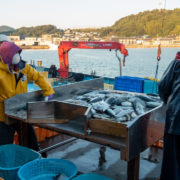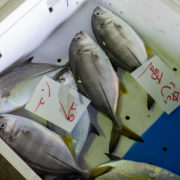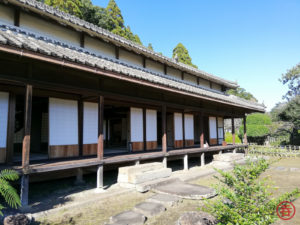We’ve visited four different shochu distilleries in our tour of Miyazaki’s shochu culture. Taken as a whole, they showcase the variety that characterizes shochu in the prefecture. There’s shochu that’s precisely engineered, shochu that’s painstakingly handcrafted, shochu that features the very soil its raw ingredients grow in, and shochu that follows generations of tradition.
Beyond the distilleries, it’s important to see how shochu fits into the larger culture of Miyazaki prefecture itself. Miyazaki not only makes the most shochu, they’re also #2 in terms of consumption of honkaku shochu, with over 16 liters consumed per person living there. For comparison sake, Tokyo is #23, with a measly 3.45 liters per person.Pairings with food is a fantastic and easy place to begin. Umami, baby! You’ve heard of Kobe beef, but in actuality, Miyazaki beef has won the “Wagyu Olympics” in Japan for the past three holdings of the competition. That means it’s been at the top, at least domestically, for the past 15 years.
For our pescatarians readers, you need look no further than Miyazaki’s skipjack tuna. The port of Meitsu plays host to auctions in the morning, where buyers come and bid on the daily catch, with skipjack at its height between February and May. Boats set out with crews of 20, and spray water to simulate smaller jumping fish, attracting the skipjack tuna. Importantly, this particular fishery is now certified as sustainable by the Marine Stewardship Council.
Beyond food, shochu is a significant component of Shihan Mato, a form of archery. Fast-moving projectiles and alcohol don’t always go well together, but Shihan Mato–and the associated drinking and revelry–has written records going back to 1583. That’s when Ito Yoshisuke allowed peasants to use the bows for some fun in celebration of his short-lived victory over the Shimazu clan. Even today, you can try your hand(s) at Shihan Mato at the base of the ruins of Obi Castle.
Once you’ve had enough drunken archery, you can’t miss the Udo Jingu. Per official shrine history, this picturesque location traces its roots back to 97BC(!!!!), the days of Emperor Suijin, the tenth emperor of Japan. Legend has it that it’s where sea goddess Toyotama-hime gave birth to Ugayafukiaezu, who was in turn the father of Emperor Jimmu, the legendary first emperor of Japan. A great souvenir for your visit to the shrine is–you guess it–a bottle of shochu!
Hi there! I created and run nomunication.jp. I’ve lived in Tokyo since 2008, and I am a certified Shochu Kikisake-shi/Shochu Sommelier (焼酎唎酒師), Cocktail Professor (カクテル検定1級), and I hold Whisky Kentei Levels 3 and JW (ウイスキー検定3級・JW級). I also sit on the Executive Committees for the Tokyo Whisky & Spirits Competition and Japanese Whisky Day. Click here for more details about me and this site. Kampai!

























One Comment